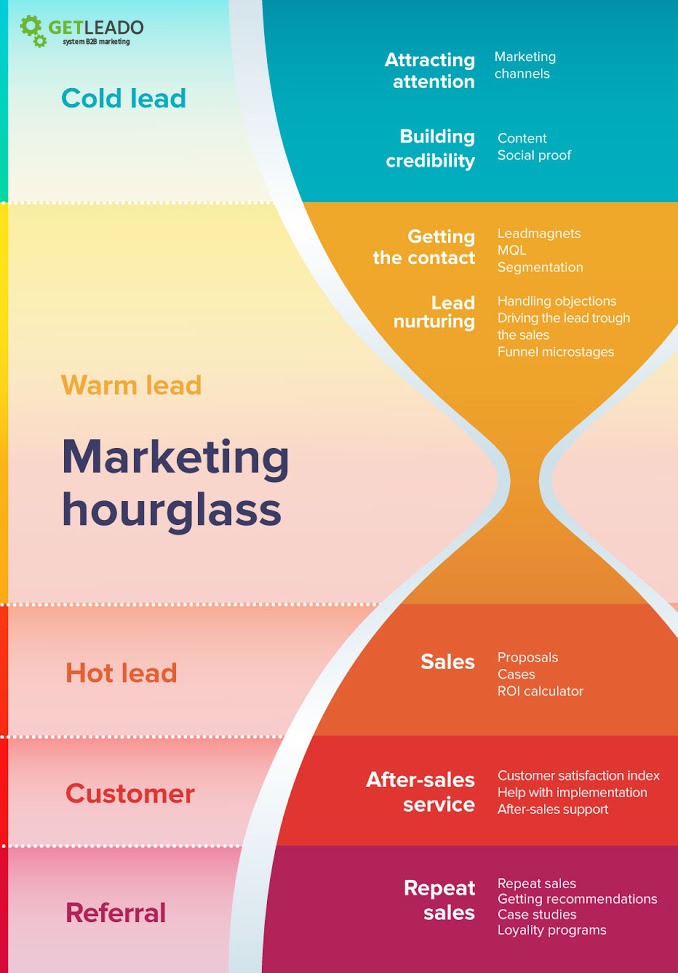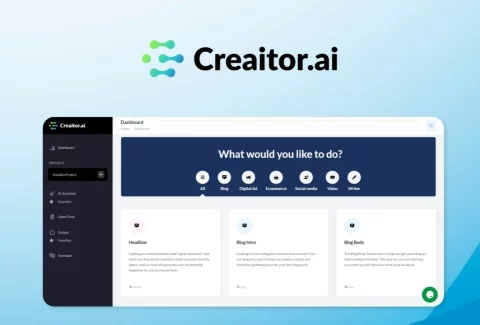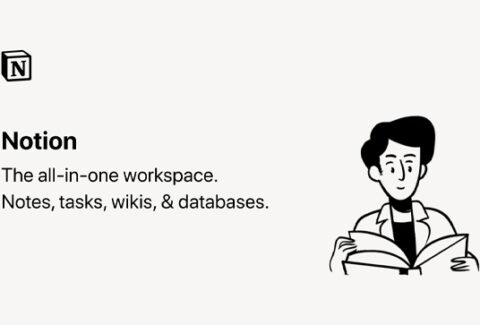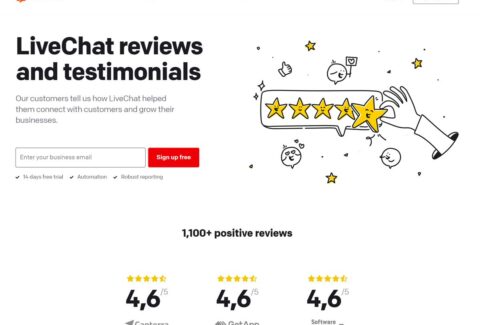How To Create A B2B Marketing Strategy For 2022
February 11, 2022 2022-06-14 12:38How To Create A B2B Marketing Strategy For 2022
B2B businesses are the ones selling products/ services to other businesses. (Business-to-business)
When you’re selling one company’s product to another, marketing is a bit different.
This Article Contains:
Difference Between B2B And B2C Marketing
How To Develop A B2B Marketing Strategy
Difference Between B2B And B2C Marketing
There are some key differences between B2B and B2C marketing.
- In the case of B2B, you’re selling to the manager and not the individual person occupying that position. They aren’t buying for their individual needs. Their interest lies in the company’s growth. Therefore, here you highlight how the product helps solve their organization’s problem.
- Highlight a financial benefit. That is, convince them that the product gives satisfactory returns on the cost. Most often, they’re looking for a long-term solution.
- B2B usually has a longer sales cycle.
- B2B buyers like to understand the product from a salesperson and get their doubts cleared one-on-one. They take the final decision only after discussions with other members of the organization.
How To Develop A B2B Marketing Strategy
Firstly, understand the basic framework for creating a B2B marketing strategy.
Then, consider the commonly faced challenges by other B2B marketers and make sure you beat these challenges even before they arise.
Lastly, consider the key B2B marketing trends for 2022 and incorporate them into your strategy.
How To Create A B2B Marketing Strategy- The Basic Framework
Here’s a step by step guide to creating the basic framework.
1. Customer Segmentation
Just because they’re purchasing for the organization, not all individuals are alike. Their pain points differ and so will their reasons for purchasing.
Identify the different customer types.
You may segment prospects according to the different features of your product. For example, if your product has 4 features. What kind of people will buy the product for the first, second, third and fourth features respectively. Create buyer personas for each.
Not all market segments are equal. Some may have more prospective customers than others. Some may have higher conversion rates than others. Sort your priorities accordingly.
You may also segment them according to their age, designations and geography.
Quick fact: According to a research by Merit 73% of B2B buyers involved in research and decision-making are millennials. Therefore, it’s more logical to segment customers. The pitch you make to a 50-year-old buyer may not work for a 20-year-old buyer the same way.
2. Understand Their Buying Journey
B2B has a longer sales cycle. And so, there are higher chances of losing a prospect midway. Identify the buyer journey for each customer segment. Further, ideate on how to approach them at each stage.
This infographic by Saleshacker presents the basic buyer journey. Generally, there are three phases in a buyer’s journey:
- Making a prospect your customer: This involves everything from creating awareness to the point when the sale is made.
- After Sales Support: Satisfy the customer with all their queries, negative feedbacks and suggestions.
- Referrals: Now, you’re in a position to ask them to recommend your products to others.

3. Develop Your Brand Positioning And Do A Competitor Analysis
Brand Positioning refers to the brand image you want to create in your prospect’s mind.
Also, do a competitor scan. Understand their marketing strategies. Get some inspiration.
4. Identify the Best Marketing Channels
Based on the understanding you’ve developed for your target audience and competitors, identify some marketing channels you can use to reach them.
Consider how much time they spend on each channel and their mindset while using it.
Considering their mindset is super-important.
Suppose they use a channel actively but use it after office hours. They won’t bother looking at something relating to work. Hence, your ads or content is likely to be ignored. Try avoiding such channels. ‘
Some of the most widely used channels are:
Email Marketing
Communicating with your prospects through email isn’t a dead idea.
It still works. According to Hubspot, 78% of marketers see an increase in email engagement since the pandemic.
But, there’s a lot of competition in the email marketing space. So make sure your emails stand out.
Website
Create a well optimised and creative website. Promote it through paid ads, SEO or social media. The main focus remains on the website.
- B2B Content Marketing
More and more B2B firms are using content marketing to create awareness.
According to a DemandGenReport, B2B buyers often read 3 to 5 pieces of content before they decide to contact a salesperson.
So basically, if your competitor’s content is better than yours, you aren’t receiving an inquiry.
According to Hubspot, 77% of B2B firms already have a content marketing strategy in place. If you don’t have one, think about it. And if you have one, think about its effectiveness.
Take Shopify for example. They regularly publish blogs, videos and podcasts. They also operate and manage various communities.
Social Media Marketing
LinkedIn, Facebook, Twitter, Reddit or Quora. You can go for any based on your target audience.
LinkedIn is a great platform for B2B marketing because people use it for professional concerns. Hence, viewers are in the right mindset.
Also, incentivize your customers to provide referrals to one another on social media websites. They’re more likely to listen to other consumers than to sellers.
B2B Influencer marketing is also on the rise in the marketing landscape. According to Hubspot, 71% of marketers plan on investing more in influencer marketing in 2022. Identify influencers in your niche and figure out a campaign.
Partnerships
Partner with other prominent personalities in your niche who aren’t your direct competitors.
You can partner for content or for their email list.
Partner for content: Create a content piece with them. Share it on your social media or blogs. You get direct visibility amongst their viewers. These are valuable prospects since they belong to the same industry.
Pitch your product/service to your partner’s email list. You and the partner can offer a complimentary offer.
If you think of giving this partnership any other form, go for it.
5. Gather Your Insights And Create A Framework
Based on the customer journey, your brand positioning and the selected marketing channels, create a framework of what you want to do and how you’ll do it.
How To Create A B2B Marketing Strategy- Key 2022 Challenges
Here is a list of some key challenges faced by most B2B marketers.
1. Proving the ROI to Stakeholders
According to a research, “6200+ B2B marketers say that their biggest challenges are generating traffic and leads, and proving the ROI of marketing activities”. The challenging part is that all you can show is increasing engagement. But you can’t show the increasing conversions, in the initial stages.
So, be ready with an explanation of how these strategies benefit the business. If you don’t have the stats, convince your stakeholders with other successful examples.
2. Alternatives To Third-Party Cookies
Till now, marketers used the data collected by third-party apps like cookies to target their marketing efforts.
Since Google announced that it won’t use cookies anymore, the marketing community is confused on how to pave a way out of this.
3. Ditching Jargons
Jargon means technical language. Avoid it as much as you can.
B2B firms often sell technical products. Hence explaining the product in a user-friendly manner is a big challenge.
Websites should sound user friendly. Not everyone has the technical understanding required to understand your business concepts. Try to explain your product and its concept in the easiest manner possible.
4. Third-party Distributors
Third-Party sellers like Amazon have started ranking higher than the main sellers. Their ads are shown even before the main seller’s website.
How To Create A B2B Marketing Strategy- The 2022 Trends
Let’s look at the B2B marketing trends for 2022.
Increased Personalisation
The more human a brand sounds, the more customer interaction it earns.
Create a Brand Voice. Basically, give your brand a personality. Is it humorous, sincere, silly, sarcastic or any other characteristic trait.
Communicate your brand voice everywhere. On sales calls, on the website, on social media, emails, appointments and any other marketing collateral.
A brand voice helps relate to your customer on a deeper level.
Video Marketing
You’re probably already aware of the emergence of video marketing.
It’s useful for B2B as well.
In 2022, nearly 82% of the online traffic will come from videos (A report by Cisco). In addition, 84% of users are more likely to invest in a product or service after watching a video.
According to a B2B related research by the Content Marketing Institute, Among the areas of investment in 2022, more than half of the marketers expect increased spending in video, events (digital, in-person, hybrid), owned-media assets, and paid media.

These stats prove how firms are directing their efforts towards video. When your competitors are doing it, you don’t have the time to stay behind.
SEO Optimization And Case Studies
In addition to keyword research, Optimizing the site according to other SEO parameters is becoming a necessity.
Over half of B2B marketers say ‘optimizing load speed’ is going to be their most effective SEO strategy in 2022.
According to the Hubspot report, A lot of marketers are also diving into case studies. In 2022, 42% of B2B marketers plan to increase their investments in case studies.
Enhance Customer Experience
Enhance the customer’s experience with your marketing efforts.
Remove any irrelevant data, make the site mobile friendly and give more payment options.
Also, make the phone call experience valuable. According to a research, GenZ prefers Phone calls over electronic communication. Only 17% of Generation Z say they like to use social media to communicate with local businesses. 57% prefer phones over electronic communication. Therefore, if you cater to the GenZ audience, make sure your customer calls are on-point.
Enhancing Customer experience through Chatbots
Chatbots make it easier to browse the website in various ways:
- Navigating the Site: For websites that are technical and elaborate, having a chatbot can provide visitors with real-time guidance on how to navigate the site.
- Instant Doubt Clearance: Automate answers according to frequently asked questions. It’s a 24/7 service and thus avoids creating friction. Customers don’t have to wait for an executive.
- Making payments quick: Send a direct payment link.
Email Marketing Automation
Automating the mailing process saves time and effort.
Two-thirds of B2B marketers are currently planning, evaluating, or implementing AI for marketing.
AI email marketing tools can facilitate customer segmentation, audience targeting, personalization, lead generation, and even content creation.
B2B Omnichannel Marketing
Omnichannel refers to using different marketing channels together.
The goal is to enhance the customer experience. One study found that 75% of B2B clients would buy again from their supplier if that firm had omnichannel capabilities.
Companies excelling at omnichannel client experiences retain 89% of their clients, on average.
Account-Based Marketing
It refers to directing the marketing efforts towards some key targeted accounts.
According to Siriusdecisions, 91% of companies using ABM increase their average deal size. 25% of such companies reported a 50%+ increase.
Conclusion
Creating a B2B marketing strategy is challenging. But there are a lot of opportunities as well.
The basic framework gives you a blueprint to start with. Further, modify your strategy according to the challenges and latest trends.
Do incorporate the latest trends. They give you the first-mover advantage.
Related Posts
Notion Review 2023: Is this Productivity Software any good?
LiveChat Review 2023 : Is this Web Live Chat Software any good?
Search
Popular posts
- How to Build a Multi-Vendor Services Marketplace Using WordPress: A Comprehensive Guide
- Creaitor AI Writing Tool Review 2023: Is this AI Writing Software any good?
- Notion Review 2023: Is this Productivity Software any good?
- LiveChat Review 2023 : Is this Web Live Chat Software any good?
- What is Affiliate Marketing?: The Complete Guide
Categories
Search
Popular products
-
All Access Pass - Digital Asia Summit 2022
₹499.00
₹4,999.00 -
Community Access Pass - Digital Asia Summit'22
₹799.00
₹7,999.00 -
LinkedIn Personal Branding Workshop
₹800.00
₹1,200.00









